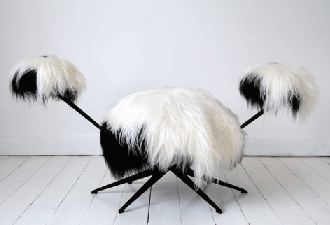ARTicles, the blog of the National Arts Journalism Program, is back with a robust participant lineup. I was especially taken with Peter Plagens’ attempt to link Holden Caulfield (The Catcher in the Rye) with Andy Warhol – bad boys fictional and reality-based – who brought high culture down, here.
I’m a sucker for Plagens’ writing. Even when I know I’m being conned, I eat it anyway, enjoying its blunt relish. Here’s his lead:
Way back smack dab in the middle of the last century, Americans still liked their popular literature to have, if not gravitas, at least some pretentious heft and coffee-table profundity.
That’s Plagens’ version of the kind of literature overthrown by a caustic teenager. Plagens’ quotes Caulfield’s opening line:
“If you really want to hear about it,” Holden says, “the first thing
you’ll probably want to know is where I was born and what my lousy
childhood was like, and how my parents were occupied and all before they
had me, and all that David Copperfield kind of crap, but I don’t feel
like going into it, if you want to know the truth.”
Plagens’ asks who that sounds like and answers his own question: Andy Warhol.
Of course, Warhol–probably destined to be known until the end of time
adolescently as “Andy”–did not actually speak like that. In fact, he
never spoke much in public at all. But Warhol, too, never felt like
“going into it.” The last thing he wanted to go into was that he was a
Czech-American, mass-attending Catholic boy from Pittsburgh. Nowhere in
his flat, crass and affectless silkscreened pictures of Marilyn, Liz or
Jackie lay the slightest hint of what his childhood was like or how his
parents were occupied before they had him or any of that David
Copperfield kind of crap.
Gert Verhoeven
Andy
Laquered steel, sheepskin, foam
L 160 cm x W 60 cm x H 70 cm
Edition of 15 (Image via)
 Verhoeven’s wiggy chair is more Warholian than any line ever given to the hell-with-it hero of just-say-no. Warhol embraced and Caulfield rejected. Aren’t they opposites? Besides, what pre-Pop visual artists of that era engaged the subject of their childhoods? (Remember Jackson Pollock talking about the influence of mom and dad? It didn’t happen.)
Verhoeven’s wiggy chair is more Warholian than any line ever given to the hell-with-it hero of just-say-no. Warhol embraced and Caulfield rejected. Aren’t they opposites? Besides, what pre-Pop visual artists of that era engaged the subject of their childhoods? (Remember Jackson Pollock talking about the influence of mom and dad? It didn’t happen.)
Plagens loses the audience, picks it back up and shakes it like a puppy with a chew toy. Doubt patrols the edges of his text to keep the reader simultaneously at bay (the chew toy would get away if it could) and engaged (no help for it). In the end, however, none of his premises rings true. But art criticism has more to offer than the truth.
What is truth? said jesting Pilate, and would not stay for an answer.
Art is not a religion. Although there is room for the leap of faith, art is built on cognitive engagement. Plagens offers it. He roughs up his readers, challenges what they know by going too far and circles back to slap some pseudo-sense into his argument, just when it was down for the count. Who needs a gym, when we’ve got Peter Plagens?



Leave a Reply